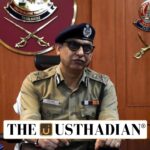Legal basis for tapping telephones
Phone Surveillance Under Legal Lens in India: The ability of Indian authorities to intercept phone conversations is rooted in three principal laws: the Indian Telegraph Act of 1885, the Post Office Act of 1898, and the Information Technology Act of 2000. Among these, the Telegraph Act plays the central role. Its Section 5(2) restricts such actions to situations involving either a public emergency or serious concerns related to public safety.
Static GK fact: Originally enacted to regulate telegrams, the Indian Telegraph Act is now the main law used to justify phone interception.
The Constitution allows the government to curb free speech and privacy rights under Article 19(2), but only in cases tied to national integrity, state security, foreign relations, public order, or to prevent the incitement of crimes. Any use of surveillance must strictly adhere to these boundaries.
Diverging court interpretations in 2025
Recent court judgments have exposed differing views on phone interception, particularly when done before a crime has been committed. The Delhi High Court approved surveillance in a case involving large-scale corruption worth over Rs 2,000 crore, stating that such crimes could endanger public confidence and state functioning. The court saw the economic damage as a significant threat to society.
In contrast, the Madras High Court struck down a surveillance order related to a Rs 50 lakh bribery case, arguing that tax-related offences alone do not justify emergency tapping. It also pointed out violations in the procedural process, calling the tap unauthorised and unlawful.
Supreme Court restrictions on interception powers
In a key judgment from 1997—People’s Union for Civil Liberties vs Union of India—the Supreme Court introduced clear restrictions to prevent the misuse of interception powers.
Only the Home Secretary at the Centre or in a state is allowed to issue such an order. This responsibility cannot be passed down to lower-level officers. Furthermore, it must be demonstrated that there is no other way to obtain the information. A high-level review committee, including figures like the Cabinet Secretary, must re-examine such orders within a two-month window.
Static GK Tip: This Supreme Court ruling set the groundwork for all phone surveillance in India, ensuring that individual freedoms are not arbitrarily violated.
Conflicting interpretations raise key concerns
The two High Court decisions illustrate the ongoing debate between protecting individual liberty and ensuring national interest. The Delhi verdict expanded the concept of “public safety” to include financial crimes, while the Madras ruling reinforced strict legal standards, underlining the importance of procedural compliance and civil rights.
These differing approaches may affect how future surveillance is justified—especially when authorities act before any crime takes place.
Challenges of digital surveillance
With communication increasingly shifting to encrypted platforms, surveillance today also involves tracking emails, messages, and online interactions. This falls under the IT Act of 2000, which governs electronic interception. However, the complexity of monitoring private digital conversations while upholding privacy guarantees continues to be a legal and ethical challenge.
Static GK fact: The Information Technology Act, 2000 was India’s first digital-era law to deal with cyber regulation and electronic data access.
Static Usthadian Current Affairs Table
| Topic | Detail |
| Governing Law | Indian Telegraph Act, 1885 (Section 5(2)) |
| Additional Laws | Indian Post Office Act, 1898 and IT Act, 2000 |
| Landmark Case | People’s Union of Civil Liberties vs Union of India (1997) |
| Delhi HC Ruling | Allowed tapping in Rs 2,000 crore corruption case |
| Madras HC Ruling | Invalidated tapping in Rs 50 lakh bribery case |
| Authorising Official | Home Secretary at State or Centre |
| Review Committee | Includes Cabinet Secretary; must review in 2 months |
| Key Concern | Balancing national security with individual privacy |
| Static GK Fact | Telegraph Act originally meant for telegrams |
| Digital Surveillance Law | Governed under Information Technology Act, 2000 |








